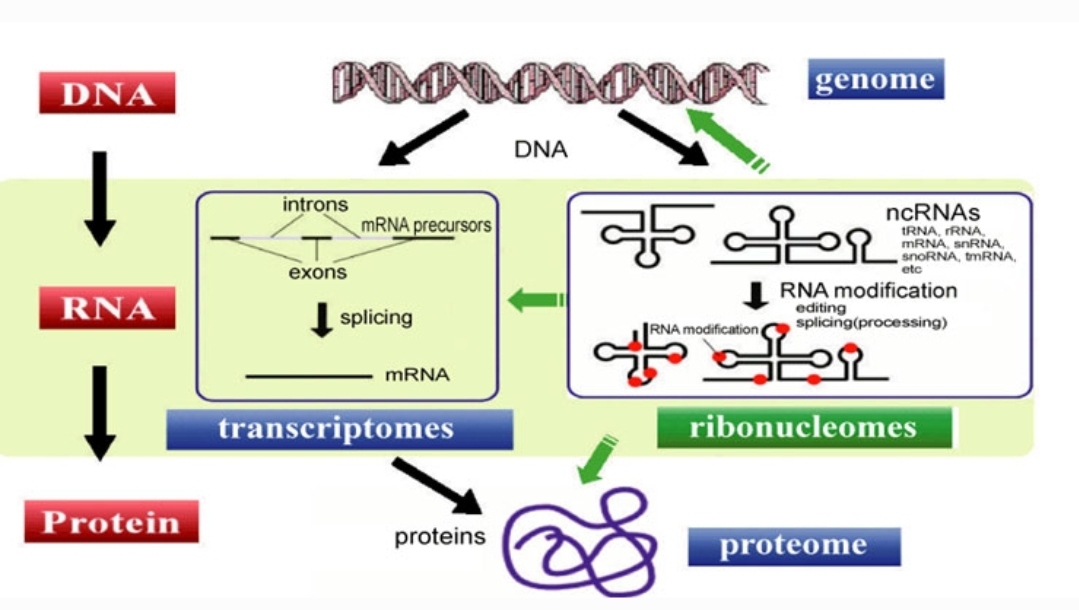Epigenetics and the Mitigation of Mutations: A Complex Interplay
"We conclude that epigenetic mutational bias challenges the pevailing paradigm that mutation is a DIRECTIONLESS force in evolution. Our discovery yields a new account of the forces driving patterns of natural variation, CHALLENGING a LONG-STANDING PARADIGM regarding the randomness of mutation." Nature 1/22
Epigenetics, the study of heritable changes in gene expression that occur without altering the underlying DNA sequence, plays a crucial role in maintaining genomic stability and mitigating mutations. While mutations are inevitable due to errors in DNA replication and exposure to environmental mutagens, epigenetic mechanisms act as a buffer, minimizing the occurrence and impact of these genetic alterations. This essay explores the various ways in which epigenetics contributes to the reduction of mutations, encompassing DNA methylation, histone modifications, and non-coding RNA regulation.
DNA Methylation: A Silencing Guardian
DNA methylation, the addition of a methyl group to cytosine bases in DNA, is a prominent epigenetic mark that influences gene expression. In the context of mutation reduction, DNA methylation primarily acts as a silencing mechanism for transposable elements (TEs). TEs are mobile DNA sequences capable of relocating within the genome, and their uncontrolled activity can lead to insertional mutations, disrupting gene function and causing genomic instability. DNA methylation of TEs effectively silences their expression, preventing their movement and minimizing the risk of TE-induced mutations.
Moreover, DNA methylation patterns are essential for maintaining genomic imprinting, a process where certain genes are expressed in a parent-of-origin-specific manner. Disruptions in DNA methylation patterns associated with imprinted genes can lead to imprinting disorders characterized by developmental abnormalities and increased susceptibility to cancer. By preserving proper DNA methylation patterns, epigenetic mechanisms safeguard against these detrimental mutations.
Histone Modifications: Orchestrators of Chromatin Structure
Histone proteins, around which DNA is wrapped to form chromatin, are subject to various chemical modifications, including acetylation, methylation, phosphorylation, and ubiquitination. These histone modifications influence chromatin compaction and accessibility, thereby regulating gene expression. In the context of mutation prevention, histone modifications play a role in DNA repair processes.
Certain histone modifications, such as H2AX phosphorylation, are crucial for recruiting DNA repair proteins to sites of DNA damage. Efficient DNA repair is essential for preventing the accumulation of mutations caused by DNA lesions. Additionally, histone modifications associated with heterochromatin, a tightly packed form of chromatin, can suppress the expression of repetitive DNA sequences, reducing the likelihood of replication errors and subsequent mutations.
Non-Coding RNA Regulation: Guardians of Genomic Integrity
Non-coding RNAs (ncRNAs), RNA molecules that do not encode proteins, have emerged as key regulators of gene expression and genome stability. Small ncRNAs, such as microRNAs (miRNAs) and small interfering RNAs (siRNAs), can silence gene expression by binding to complementary mRNA sequences. In the context of mutation reduction, ncRNAs can target and suppress the expression of genes involved in DNA damage response pathways, ensuring that DNA repair mechanisms are activated promptly.
Furthermore, long ncRNAs (lncRNAs) can act as scaffolds, recruiting chromatin-modifying enzymes to specific genomic loci. By modulating chromatin structure, lncRNAs can influence gene expression and suppress the activity of TEs, similar to DNA methylation.
Environmental Epigenetics: Adaptive Responses to Mutagens
Epigenetic mechanisms are not only involved in intrinsic mutation prevention but also play a role in adaptive responses to environmental mutagens. Exposure to environmental stressors, such as toxins or radiation, can induce epigenetic changes that alter gene expression patterns, potentially enhancing DNA repair mechanisms or activating detoxification pathways. These adaptive epigenetic responses can mitigate the mutagenic effects of environmental insults and promote survival.
Conclusion
Epigenetics is a multifaceted field with far-reaching implications for genomic stability and mutation prevention. Through DNA methylation, histone modifications, and non-coding RNA regulation, epigenetic mechanisms act in concert to safeguard the genome from the deleterious consequences of mutations. By silencing transposable elements, facilitating DNA repair, and modulating gene expression in response to environmental challenges, epigenetics plays a vital role in maintaining genomic integrity and ensuring the faithful transmission of genetic information across generations.
It is important to note that while epigenetics offers significant protection against mutations, it is not foolproof. Mutations can still occur due to various factors, and epigenetic mechanisms themselves can be disrupted by environmental or genetic perturbations. Nevertheless, the intricate interplay between genetics and epigenetics highlights the dynamic nature of gene regulation and its profound impact on genome evolution and human health.





Comments
Post a Comment